Intel: For Mainstream Gamers, Our IGPs Are Equivalent to Discrete GPUs
by Anton Shilov on January 14, 2016 12:03 PM EST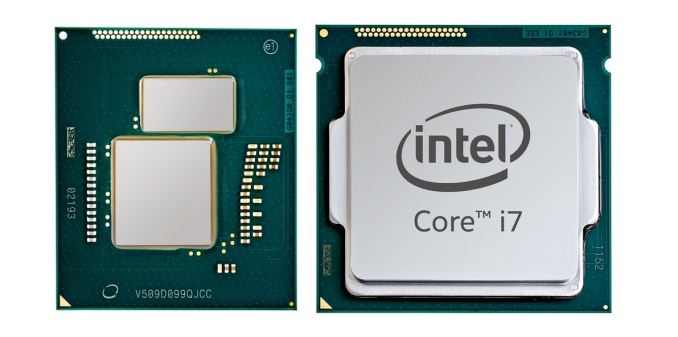
Intel’s integrated graphics processors (iGPUs) are the most widespread PC-class graphics adapters on the planet. Enthusiasts of high-performance personal computers do not use Intel’s iGPUs, but the world’s largest developer of microprocessors says that for mainstream and casual gamers its graphics solutions offer performance, which is comparable to that of inexpensive discrete video cards.
“For the mainstream and casual gamer, we have improved our Iris and Iris Pro graphics tremendously,” said Gregory Bryant, vice president and general manager of the desktop client platforms at Intel, at the J.P. Morgan Tech Forum at the 2016 International CES. “We have improved our graphics performance [by 30 times] from where it was five years ago. We believe that the performance of Intel’s integrated graphics today, what we offer in the products […], is equivalent to the performance of about 80% of discrete [GPU] installed base.”
Intel has been improving its integrated graphics cores at a rapid pace after the company cancelled its discrete graphics processing unit code-named Larrabee in 2010. Thanks to timely transition to newer process technologies, Intel could increase transistor budgets of its central processing units significantly every couple of years. As the company did not increase the number of general-purpose cores inside its mainstream CPUs for desktop and mobile personal computers in the recent years, the lion’s share of that additional transistor budget was spent on iGPU-related improvements.
Intel considers its code-named Clarkdale and Arrandale processors its first-generation CPUs with integrated graphics (which is not entirely correct since these CPUs had two dies: the processor die as well as graphics and integrated memory controller die). Back then, Intel’s most advanced iGPU featured 12 execution units (EU) with peak compute performance of around 43 GFLOPS. Since then, the architecture of Intel’s integrated graphics processors has evolved to accommodate new features and gain performance. Today, each EU features two ALUs that can execute up to four 32-bit floating point or integer operations per cycle (in fact, one of the two ALUs in Intel’s Gen8 EU also supports double precision 64-bit floating point operations). Intel’s latest microprocessors — Broadwell with GT3e and Skylake with GT4e graphics cores — have Iris Pro iGPUs with 48 and 72 EUs as well as peak compute performance of 883 and 1152 GFLOPS, respectively.
While Intel did not define what it considered to be the installed base of discrete graphics cards, it is obvious that the company compares its recent Iris and Iris Pro integrated graphics processors to discrete graphics adapters sold in the last five or even more years and which are currently in use.
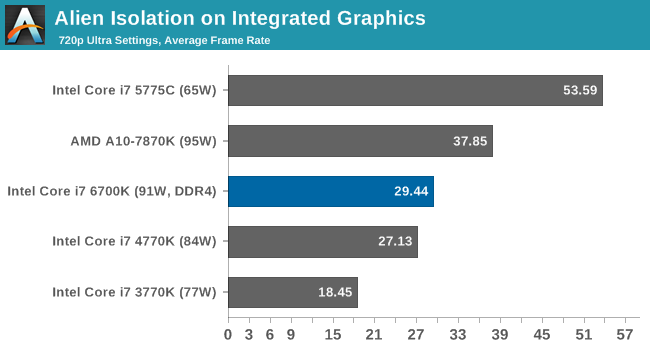
Intel’s latest integrated graphics processor found in its Skylake chips — the Iris Pro 580 with 72 execution units and 1152 GFLOPS compute performance — should outperform even more advanced discrete graphics processors. In fact, AMD's latest integrated graphics core also outperforms the low-end graphics card (albeit, by a small margin).
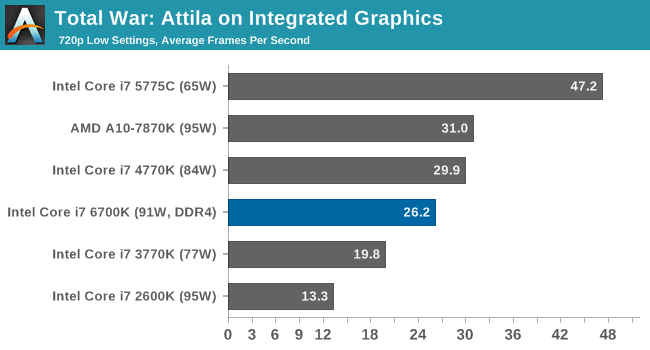

Because many people do not play demanding games that use the latest application programming interfaces (APIs), performance and features of Intel’s modern iGPUs may be enough for their needs. Moreover, since casual and even some mainstream gamers usually buy low-end graphics adapters, Intel’s Iris Pro 6200 and Iris Pro 580 can actually outperform such GPUs (or offer similar performance). It is not clear whether 80% of discrete graphics boards currently in use belong to the entry-level segment, but it evident that contemporary iGPUs are somewhat better than cheap video cards.
Even though enthusiast gamers do not use Intel’s high-end iGPUs, the company continues to thrive because of PC gaming. According to Intel’s management, sales of its Core i7-series microprocessors set records in Q2 2015 despite weak demand for personal computers overall. Moreover, Intel claims that shipments of high-end enthusiast-class hardware in general are at all-time high and growing. Intel sells not only powerful Core i7 CPUs with unlocked multiplier to demanding gamers, but also chipsets, solid-state drives, various controllers and other components for high-end PCs. As a result, the company takes advantage of increasing demand for powerful personal computers.
Source: Intel Investor Relations


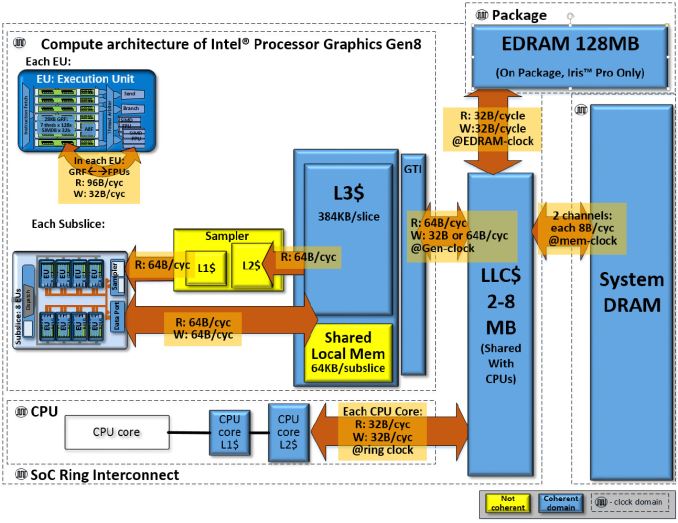
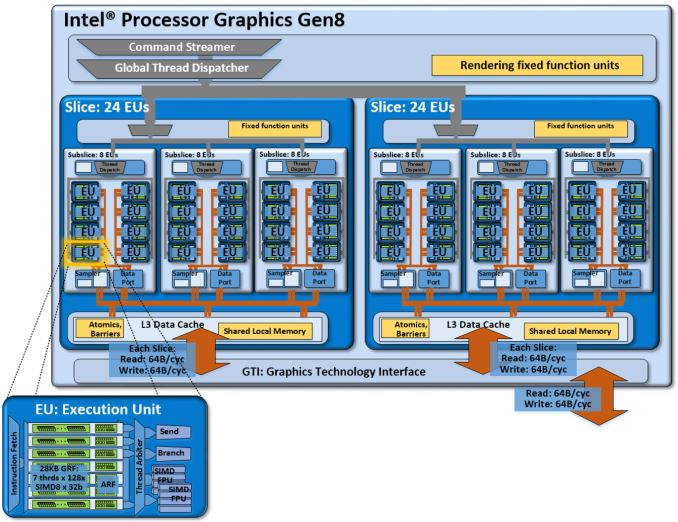








96 Comments
View All Comments
mdriftmeyer - Thursday, January 14, 2016 - link
I guess they think people have a hard time inserting a discrete gpu. Counting on the lazy factor.Shadowmaster625 - Thursday, January 14, 2016 - link
So Intel releases a few SKUs that are so expensive you may as well just buy a real GPU and save some money, and with that they are now claiming that their ENTIRE line of woefully underpowered GPUs are equivalent to discrete. O...K... pull the other one now.AdamF - Thursday, January 14, 2016 - link
This feels like sponsored content from Intel.baobrain - Thursday, January 14, 2016 - link
Because it probably is10101010 - Friday, January 15, 2016 - link
Most everything on the big tech sites is sponsored content these days.Gurbo - Thursday, January 14, 2016 - link
All I got from this article was: "Yes, our iGPUs barely outperform outdated and really low end dGPUs that are manufactured in a process 2 to 3 steps older depending on how you count them. Hey... who are those guys coming from far away? Oh, crap, it's Pascal and Polaris!!! Run, Iris!!!".Cryio - Thursday, January 14, 2016 - link
Just so most of you know, the Iris 580 is supposed to be around 75% faster than the one in the i7 5775C and basically faster than a desktop Nvidia GTX 750 non-Ti/260 non-XQwertilot - Thursday, January 14, 2016 - link
Those low end GPUs are about to ~double in performance with the node shrink though, so they need that to keep pace(!). It might at least push NV/AMD to actually put die shrunk things down the stack reasonably fast.(Especially for mobile things.).
vcsg01 - Thursday, January 14, 2016 - link
Okay Intel. If you are targeting consumers that buy low end discreet cards, then why don't you sell an I3 cpu with iris pro for 70 bucks more than a normal i3? That makes a lot more sense than what they are doing. The kind of people that buy a $70 r7 240 aren't the same kind of people who spend $300 on a cpu.pugster - Thursday, January 14, 2016 - link
Yeah, buy one of their overpriced cpu's at around $370 and you can buy a lower end cpu and a better graphics card.